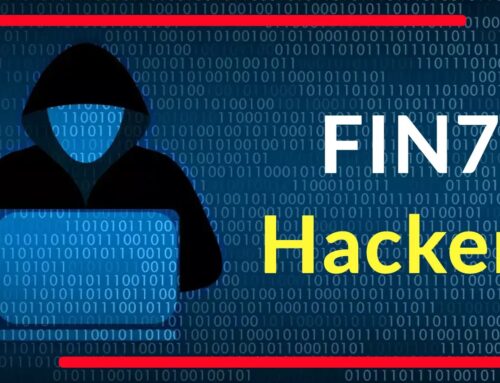
Sidewinder APT Hackers Leverage Nepal Protests to Push Mobile and Windows Malware
The digital battlefield often mirrors real-world unrest, and recent events in Nepal serve as a stark reminder of this dangerous convergence. As widespread protests erupted in early September 2025, a notorious Advanced Persistent Threat (APT) group, Sidewinder, wasted no time exploiting the chaos. This sophisticated threat actor leveraged the public’s immediate need for information and assistance, deploying a deceptive campaign that disseminated both mobile and Windows malware.
This incident underscores the critical importance of vigilance, even during times of social upheaval. For cybersecurity professionals, understanding the tactics, techniques, and procedures (TTPs) of groups like Sidewinder is paramount to protecting vulnerable populations and critical infrastructure.
Sidewinder APT: A Persistent Threat Profile
The Sidewinder APT group, also known as Hardcore Nationalist, T-APT4, or Rattlesnake, has a long history of targeting South Asian entities, with a particular focus on government, military, and critical infrastructure. They are renowned for their highly adaptive and persistent campaigns, often utilizing social engineering tactics to gain initial access.
Their modus operandi frequently involves intricate phishing schemes and the deployment of custom-built malware designed for information exfiltration and long-term espionage. This particular campaign during the Nepal protests perfectly aligns with their established patterns of exploiting current events and human psychology to achieve their objectives.
Exploiting Turmoil: The Nepal Protests as a Lure
The protests in Nepal, triggered by government policies and social media restrictions in September 2025, created a climate of uncertainty and a heightened demand for real-time information. Sidewinder APT capitalized on this by crafting malicious applications that mimicked legitimate emergency services and news updates.
Victims, seeking information on protest movements, live updates, or even assistance, were lured into downloading these seemingly innocuous applications. This tactic, known as “trojanizing” legitimate-looking software, is a common Sidewinder technique, but its application during a period of civil unrest amplified its potential impact significantly.
The source content indicates that applications were disguised as emergency services, a particularly insidious method given the vulnerability of those seeking aid. This highlights the group’s opportunistic and ruthless approach to cyber warfare.
Mobile and Windows Malware: A Dual-Platform Attack
The Sidewinder APT group demonstrated its versatility by deploying malware targeting both mobile devices and Windows operating systems. This dual-platform approach ensures a wider victim pool and increases the chances of successful compromise, regardless of the target’s primary computing environment.
- Mobile Malware: Likely designed to steal sensitive data such as call logs, contacts, SMS messages, location data, and potentially even recording audio or video through compromised device microphones and cameras. These applications often request extensive permissions upon installation, which unsuspecting users might grant out of urgency.
- Windows Malware: Typically more sophisticated, ranging from Remote Access Trojans (RATs) to info-stealers and keyloggers. This malware can be used for persistent access, network reconnaissance, data exfiltration, and potentially even lateral movement within compromised networks.
The specific families of malware used are not detailed in the provided source, but Sidewinder is known to employ a variety of custom tools, constantly evolving their payloads to evade detection.
Remediation Actions and Prevention
Protecting against sophisticated threats like those deployed by Sidewinder APT requires a multi-layered security strategy. Here are crucial remediation actions and preventative measures:
- User Education and Awareness: Conduct regular training on social engineering tactics, especially emphasizing caution around unsolicited applications, links, and attachments, particularly during times of crisis. Educate users about verifying app legitimacy through official app stores or trusted sources.
- Endpoint Detection and Response (EDR): Implement robust EDR solutions on all endpoints (both mobile and Windows) to detect and respond to suspicious activities, even fileless malware or advanced persistent threats.
- Mobile Device Management (MDM): For organizations, MDM solutions are critical for enforcing security policies, managing app installations, and monitoring device health.
- Antivirus/Antimalware Solutions: Ensure all devices have up-to-date antivirus and antimalware software from reputable vendors.
- Patch Management: Regularly patch and update operating systems, applications, and firmware to mitigate known vulnerabilities. While no specific CVEs were mentioned in this incident, Sidewinder often exploits publicly known flaws.
- Network Segmentation: Isolate critical systems and sensitive data from general user networks to limit the scope of potential breaches.
- Principle of Least Privilege: Grant users and applications only the minimum necessary permissions to perform their functions.
- Regular Backups: Implement a robust backup and recovery strategy to minimize the impact of data loss or encryption.
- Threat Intelligence Sharing: Stay informed about the latest TTPs of APT groups like Sidewinder by subscribing to trusted threat intelligence feeds.
Conclusion
The Sidewinder APT’s opportunistic exploitation of the Nepal protests serves as a potent illustration of how geopolitical events can be weaponized in the cyber realm. Their ability to rapidly deploy sophisticated mobile and Windows malware, disguised as essential services, highlights the need for continuous vigilance and proactive cybersecurity measures.
For individuals, the lesson is clear: exercise extreme caution when downloading applications or clicking links, especially during times of crisis. For organizations, this incident reinforces the imperative of comprehensive security strategies that encompass user education, advanced endpoint protection, and robust incident response capabilities to counteract ever-evolving threats from well-resourced adversaries like Sidewinder.





